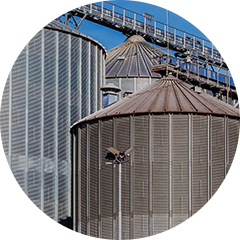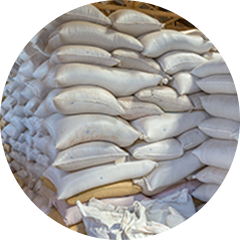
The value we bring
Increasing food safety
Quality assurance professionals rely on our products to eliminate vectors of disease, which helps to mitigate the risk of E. coli, Salmonella, Listeria and other food borne outbreaks.
Enhancing public health
Public health officials, homeowners and food manufacturers look to our products to eliminate rodents and insects that transmit allergens and serious illnesses in our homes, food and everyday workplaces.
Supporting biodiversity
Effectively eliminating pests enables global trade, allowing importers and exporters to ship product without the threat of invasive species that compromise biodiversity in regions and ecosystems across the globe.
Protecting economic resources
For more than 50 years, our products have eliminated pests that threaten food, homes and public structures to optimize the economic viability of local communities.
Technology innovation
As the global gold standard for fumigation, we have pledged to reduce post-fumigation emissions of sulfuryl fluoride by 50% by 2035. This commitment to Climate Smart Fumigation™ is structured to optimize fumigation technology, while being mindful of the environment.
Our areas of research for emission reduction include:
- Precision Fumigation™
- Scrubber Technology
- Other Technologies
Check back for updates on our progress, technological advancements and expert insights from industry stakeholders.
Our industry partners
From regulators, food safety and quality assurance leaders to fumigators and business management specialists, we work with numerous partners to preserve sulfuryl fluoride as the most reliable, efficient and sustainable approach to controlling problematic pest infestations. These partnerships also allow us to ensure that sulfuryl fluoride is used safely and in accordance with its EPA label.
Where we make a difference
In our commitment to being a leader in low-emission fumigation, Douglas Products strives to optimize fumigation technology and reduce environmental impacts from associated emissions. This work directly benefits the following use sites:

Shipping and Transportation
Stationary Rail Cars
Containers
Chambers
Barges

Commodity Facilities
Silos
Bins
Bunkers
Flat Storage
Seed Production
Mills
Fumigation Chambers
Seed Processing and Storage

Manufacturing, Processing & Storage Facilities
Food Processing/Manufacturing
Food Warehouses, Bakeries
Pet Food Facilities
Ground Piles
Fumigation and Temporary Chambers
Food Warehousing
Nonfood Warehousing
Distribution Centers

Residential & Commercial
Homes & Dwellings
Historical landmarks
Churches
Museums
Research Facilities
Colleges
Hotels